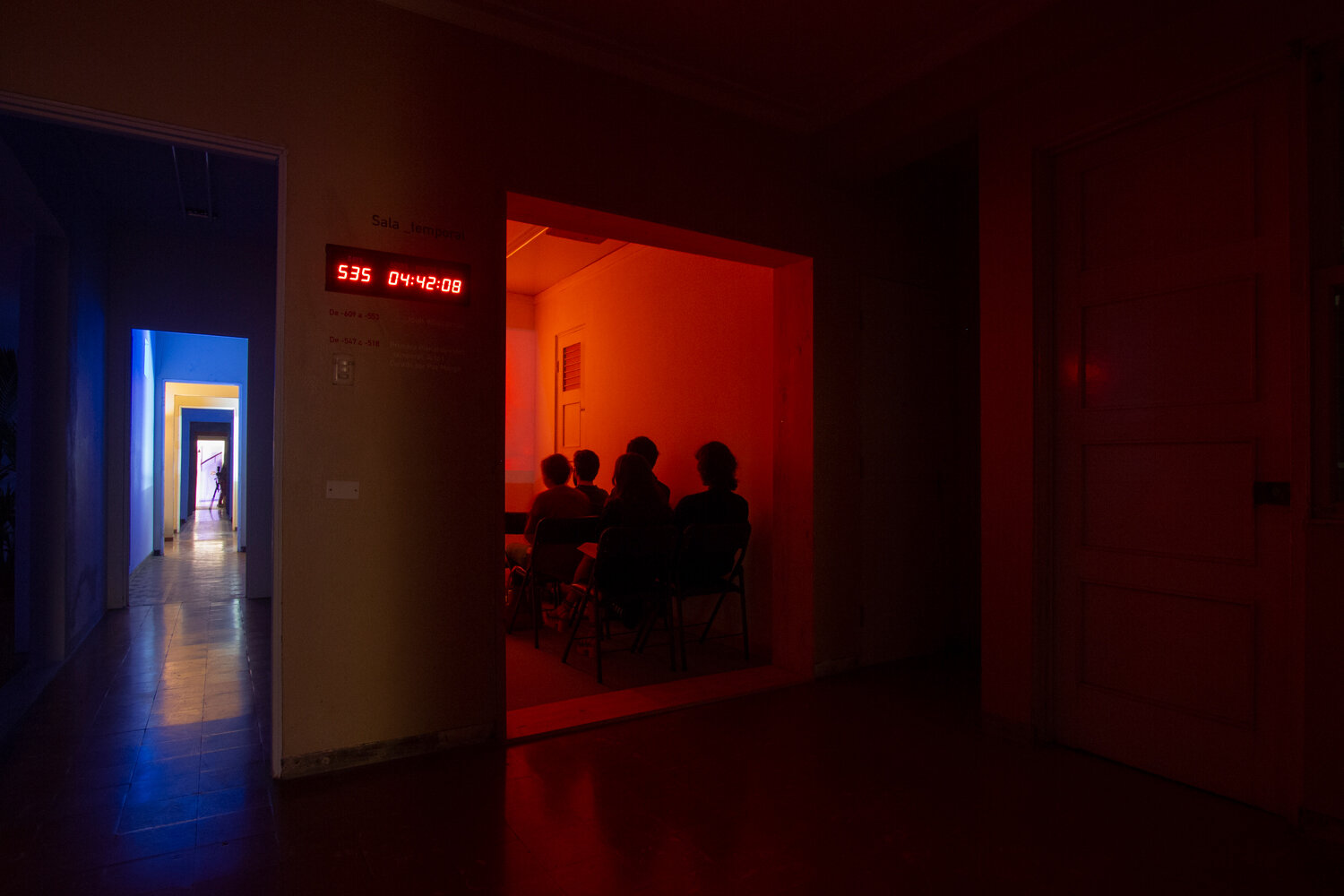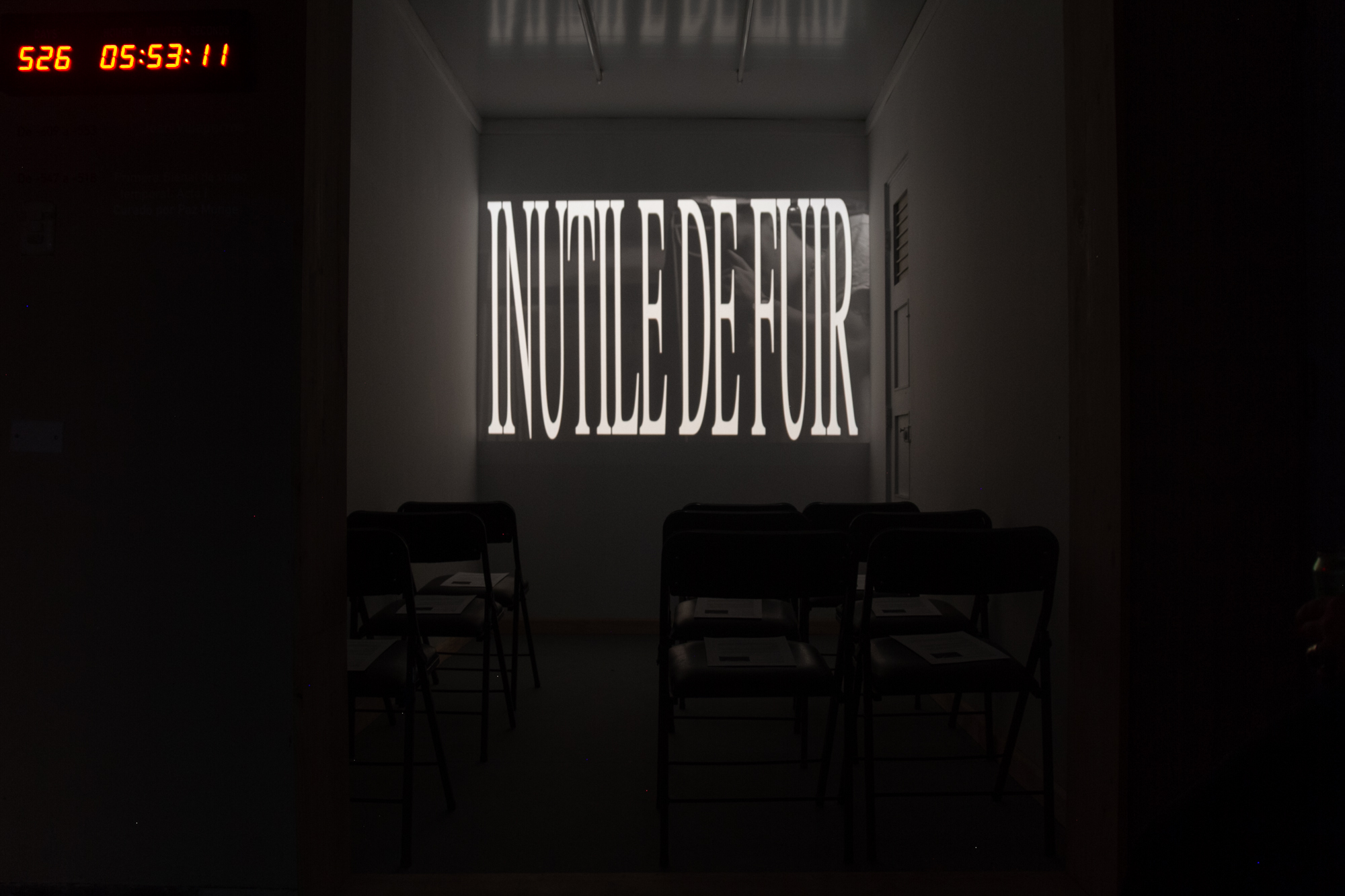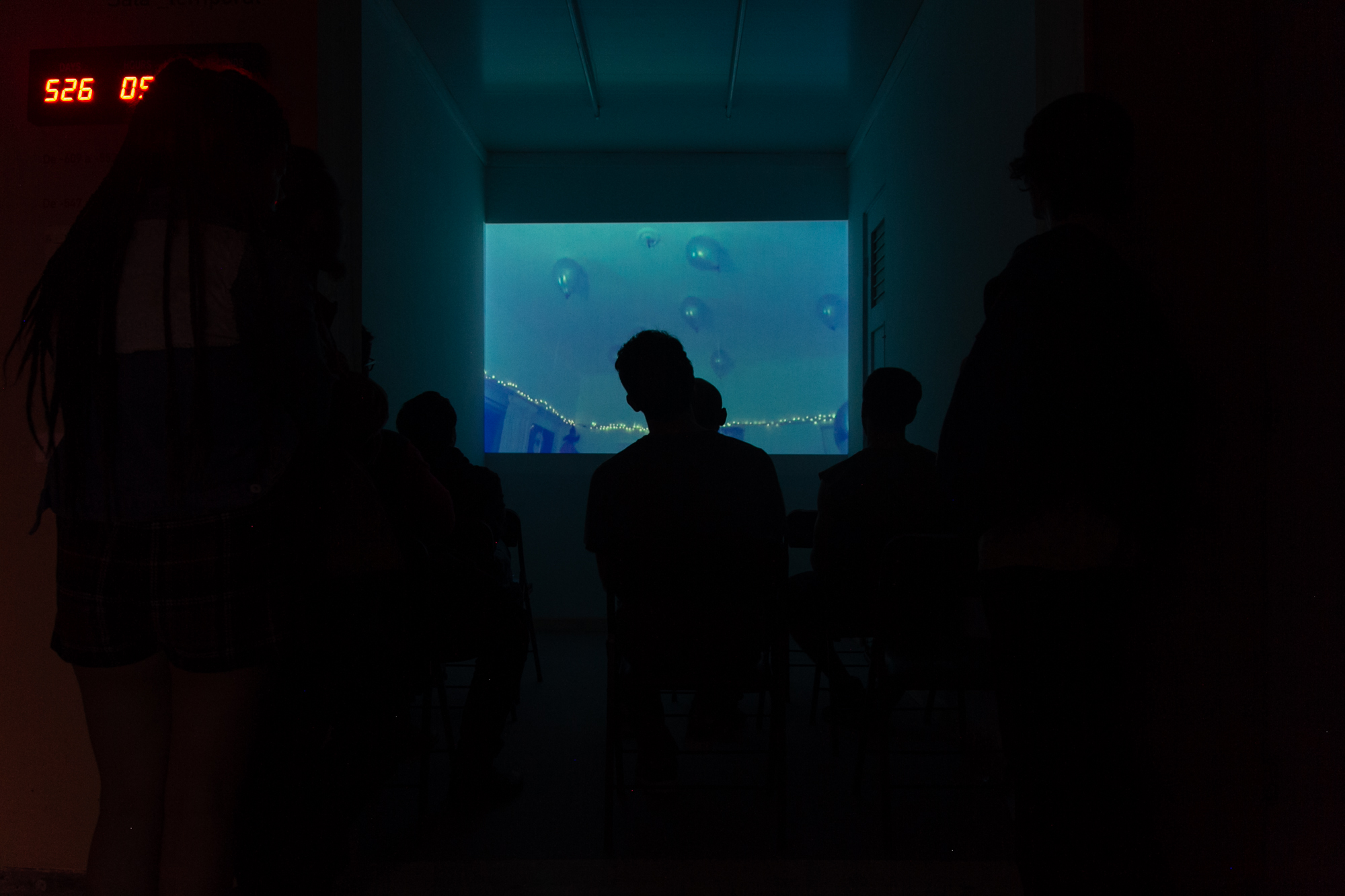Curated by Paz Monge
_temporal, San José, Costa Rica
13-29 February 2020
The ‘First and Last Video Biennial’ was organized within the framework of Paz Monge’s (Director, Museo de Arte y Diseño Contemporáneo, San José, CR) curatorial residency at _temporal, a multidisciplinary project space set in a former residential villa slated for demolition. The video biennial sought to make visible artistic practices that deal with issues of temporality, permanence, iconography, and forms of protest around concepts of time. The three weeks of screenings were divided by country (Costa Rica, the United Kingdom and Brazil) and programmed by guest curators from these regions.
For more information on Weeks 1 & 3, click here.
***
Week 2: London with Vasiliki Antonopolous & Kevin Elamrani-Lince
Curated by Maison Touchard
20-22 February 2020





Screening Notes
Notes on Fragile Architecture1
“Architecture domesticates limitless space and enables us to inhabit it, but it should likewise domesticate endless time and enable us to inhabit the continuity of time.”
– Juhani Pallasmaa2
In his 1996 book, The Eyes of the Skin: Architecture and the Senses, Finnish architect Juhani Pallasmaa delves into the intricate entanglements between our experiences of architecture, memory, and time. We configure ourselves according to the structures that house and surround us; built environments offer a tangible means of conceptualizing the vast, limitless notion of space. Our memories thus are forcibly in-situ, and as time passes and experience accumulates in the static structures that house them, these locations become charged with their residual trace. Faced with the impending disappearance of such premises, our faculties of embodied memory become tasked with absorbing the dispersal of its contents.
For _temporal’s first and only video biennial, curated by Paz Monge, Maison Touchard has selected two films whose authors and subjects span nationalities and borders, and in which the concreteness of urban architecture and the vastness of geopolitical economic structures seep viscerally into the bodies they shape and host.
Vasiliki Antonopoulou
(b.1990, lives and works London, UK)
XPAT (2018)
18:44 min
Antonopoulou’s practice spans text, performance, and moving image to explore notions of displacement and otherness. These notions manifest in metaphors that create multiple layers, delving into the emotional relationships that exist in particular spaces and architectures. XPAT (2017) is comprised of four sections. These feature four buildings which are, or have been, past homes. Shot between Greece and Saudi Arabia – where Antonopoulou was born and raised – the houses become 1 This title is borrowed from Juhani Pallasmaa’s essay, “Hapticity and Time: Notes on Fragile Architecture”, Architectural Review, Vol. 207, 2000. pp. 78-84. 2 Pallasmaa, Juhani. The Eyes of the Skin: Architecture and the Senses. Wiley: United Kingdom, 2007. p.32. metaphors for the artist’s previous lovers. Architecture becomes body, and body becomes architecture. The use of architecture as a metaphor for love and loss is used to question the nature of heteronormative existences through the presentation and questioning of symmetry. Seminal design objects are used as analogies to question socially constructed expectations for the future and the place of the queer body within them. Through the use of text and moving image, the viewer is invited to engage in a slow and immersive process of reading that takes them on a narrative of nostalgia, and fantasy. Acting like a visual poem, XPAT creates intimate environment to talk about familiarity and displacement, through love and loss, while travelling between past, present and future.
XPAT CREDITS: Sound composition: Andreas Papapetrou | Song Excerpts: Tzeni Vanou - Se Vlepo Sto Potiri Mou, Pet Shop Boys - This Must Be The Place I Waited Years to Leave | Film Excerpts: Space ship scene taken from 'Liquid Sky' (1982), directed by Slava Tsukerman
Kevin Elamrani-Lince
(b.1988, lives and works Paris, FR)
Inutile de fuir (2017)
72 min
Inutile de fuir (trans. “fleeing is pointless”) (2017) resulted from a collaboration between the artist and the music label Casual Gabberz around the subject of Gabber culture, a subgenre of hardcore techno music that emerged in Rotterdam, NL in the 1990s and subsequently diminished due to its problematic links to Alt-Right movements and subsequent absorption into the mainstream electro scene. Shot in black and white over the course of several road trips between Paris, the Netherlands, and Poland – in the outskirts of large cities where the Gabber raves happen – Inutile de fuir is situated in the post-industrial grey area between the urban and the rural where time and progress seem to be suspended. Focusing on geographic and cultural peripheries of economic power, Elamrani-Lince’s camera pans endless plains whose flat horizons are only disturbed by immense wind turbines. Ships cross his frame, alluding perhaps to the glorious days of industrial prosperity in Europe, represented here by the large port of Rotterdam. The floating sensation created by this imagery is occasionally interrupted by fragments of conversations or the 200 BPM (beats per minute) of Gabber. The dissonance between the slowness of the imagery and the speed of its sound amounts to a sense of impending chaos. Elamrani-Lince’s film evokes the loss of an era and the uncertainty of the future, embodied in the landscape of the present.
---
1 This title is borrowed from Juhani Pallasmaa’s essay, “Hapticity and Time: Notes on Fragile Architecture”, Architectural Review, Vol. 207, 2000. pp. 78-84.
2 Pallasmaa, Juhani. The Eyes of the Skin: Architecture and the Senses. Wiley: United Kingdom, 2007. p.32.
